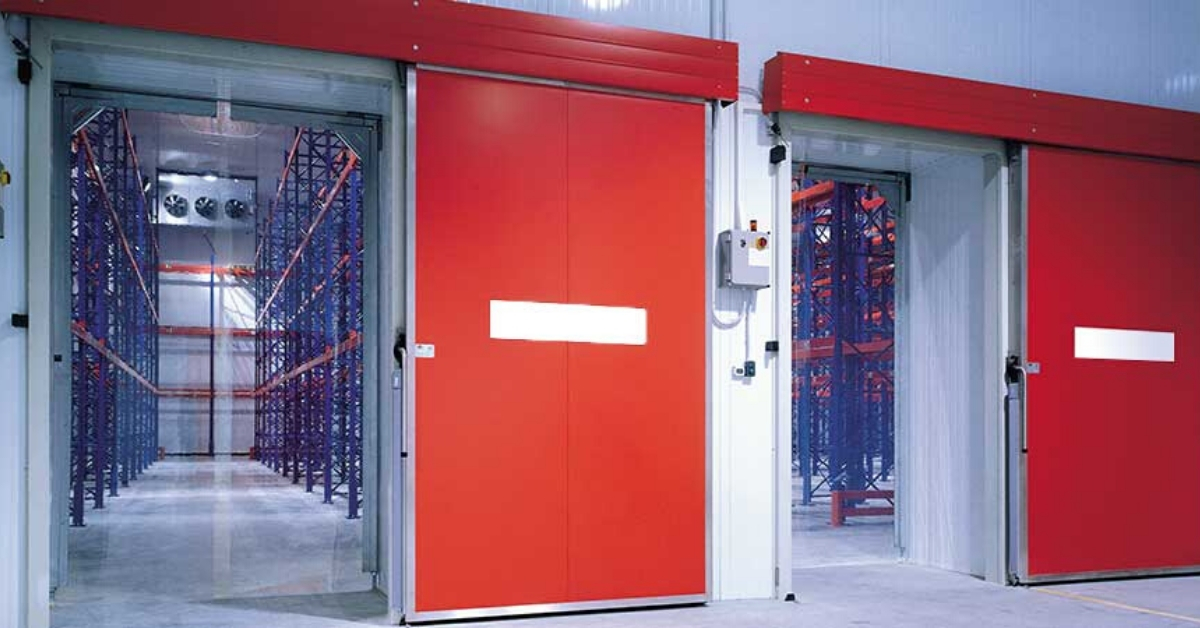Cold rooms are temperature-controlled environments that are fundamental in the food industry, as well as in the pharmaceutical industry.
One or more interconnected cold rooms provide rooms for storage, refrigeration or pre-cooling of products, mainly food, in which a stable and preset temperature must be maintained: this temperature degree depends on the intended function of the cold room and can vary from +18°C to ripen bananas to -28°C to deep-freeze fish or vegetables. The structure can be fixed or mobile and it may require a controlled atmosphere inside it.
At the basis of maintaining the efficiency of a cold store there is careful planning intended to identify the right type of material to be used to obtain the necessary insulation, thereby reducing running and maintenance costs. The design analysis consists in identifying the insulating performance required to constantly maintain internal conditions, especially temperature.
Positive temperature cold rooms
These are cold rooms with a temperature range between 0°C and 18°C and mostly used to preserve fruit and vegetables. They provide a suitable environment to store many ‘fresh’ foods, guaranteeing constant temperature and low humidity values through insulating casings with low thermal transmittance.
Negative temperature cold rooms
Featuring a temperature range between 0°C and -28°C, negative temperature cold rooms are used for the pre-cooling of fruit and vegetables, refrigeration, freezing and deep-freezing. They provide a suitable environment to store and freeze food with strict control of the temperature, humidity and internal atmosphere through insulating casings with very low transmittance and heat loss.
The passageway of the cold stores
The common element inside cold stores is the setup of a passageway located next to the freezing chamber. This area has a temperature of 5°C and allows workers to carry out some work in a more comfortable environment, although for short periods of time: indeed the time spent in this area must not exceed 30 minutes, as specified in the HACCP. To improve comfort and safety in these areas, it is useful to provide underfloor heating that prevents the formation of ice.
The cleanrooms
The food or pharmaceutical industry, but also the mechanical, electronic, automotive and aerospace industries, increasingly require some sterile processing areas to ensure the safety and hygiene of the finished product. Cleanrooms are therefore clean, controlled and sterilised areas with a controlled atmosphere. This means that the air inside them contains a minimal amount of suspended dust microparticles. Their setup, correct use and maintenance are regulated by the ISO 14644 standard.
High-speed doors: fast and durable
The high-speed doors have been designed to maintain the temperature inside the cold rooms and cold stores as constant as possible, while also withstanding temperatures as low as -28°C. Programmed to automatically close immediately after the operator passes through, new generation high-speed doors are built to withstand numerous opening/closing cycles.
They have an average opening/closing time of about 2 seconds so that the temperature variation inside the warehouse is minimal, thereby increasing the efficiency of the refrigeration cell with a consequent reduction in energy consumption.
The importance of good insulation for cold rooms
The need to maintain a constant temperature inside a cold room involves a considerable expenditure of energy. To significantly reduce air conditioning costs and favour not only constant atmospheric conditions inside the building, but also the comfort of those living inside it, the design of the cold store must consider the best solutions for ideal insulation.
The characteristics of the external casing, as well as the doors and windows and all the structural elements of the building, must provide the best possible insulation. Plus, their design and installation must ensure there are no heat bridges.
The new Conad Distribution Centre in the Tyrrhenian area has decided to use Isopan insulating panels for sustainable and efficient cold rooms.
The right materials for cold rooms
The UNI 10933 standard of 2001 defines the degree of aggressiveness of the work and storage environment: the most suitable building material is chosen based on this element.
There are various types of insulating panels on the market for controlled-temperature spaces, such as cold rooms or cleanrooms, that help guarantee the temperatures required for storing food and medicines.
The insulating sandwich panels for controlled-temperature cold rooms and environments can be made of various materials, coated in fibreglass, pre-painted metal sheets and galvanised in plastic materials. They also differ according to their level of resistance and reaction to fire and/or durability.
Insulated panels in polyurethane or polyisocyanurate foam are mostly used for temperature-controlled environments, such as Isofrozen and Isofrozen HT, designed by Isopan precisely for the food and medical industry, combining insulating properties with excellent reaction to fire.


